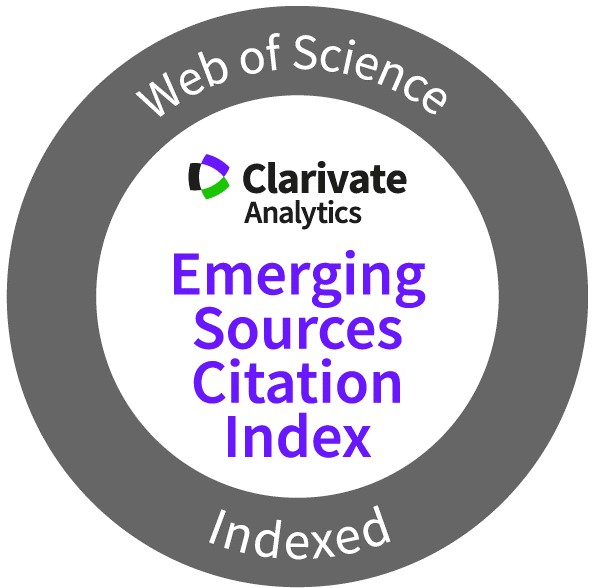Infidelidad, deseo de infidelidad e inteligencia sexual en el sureste de México
Palabras clave:
Infidelidad, Inteligencia Sexual, Infidelidad emocional, Infidelidad SexualResumen
El objetivo del estudio fue analizar la relación entre la infidelidad y la inteligencia sexual, para ello se utilizó un diseño no experimental, transversal con un alcance correlacional, se aplicó el Inventario Muldimensional de infidelidad (Palencia, Aragón, Loving, 2007) y el Coeficiente de Inteligencia Sexual (Millan, Álvarez-Gayou y Pérez, 2012) a una muestra no probabilística conformada por 1212 personas. Se encontró que más del 50% de los y las participantes reportaron haber tenido conductas infieles en su relación de pareja actual, sin diferencias significativas entre hombres y mujeres (p>0.05). Los hombres mostraron mayor deseo de infidelidad sexual y emocional con respecto a las mujeres, mientras que éstas últimas mostraron mayor inteligencia sexual en comparación a los hombres (p<0.05). No se encontraron relaciones estadísticamente significativas entre la infidelidad y la inteligencia sexual.
Citas
Alvarez-Gayou, J. P. (1998). opiniones sobre la masculinidad. Estudio cualitativo de 400 sujetos. Archivos hispanoamericanos de sexología, 3(2), 231-240.
Buss, D. M., Larsen, R. J., Western, D., & Semmelroth, J. (1992). Sex differences in jealously: Evolution, physiology, and psychology. Psychological Science, 3, 251-255. https://doi.org/10.1111/j.1467-9280.1992.tb00038.x
Cano, A., & O'leary, K. D. (2000). Infidelity and separations precipitate major depressive episodes and symptoms of nonspecific depression and anxiety. Journal of consulting and clinical psychology, 68(5), 774. https://doi.org/10.1037/0022-006X.68.5.774
Carballo Vargas, S. (2006). Educación de la expresión de la sexualidad y la inteligencia emocional en niñas, niños y adolescentes con derechos. Revista Electrónica" Actualidades Investigativas en Educación", 6(3). https://doi.org/10.15517/aie.v6i3.9223
Conrad, S. D., & Milburn, M. A. (2002). L'intelligence sexuelle: à la découverte de votre moi sexuel secret. Payot & Rivages.
Espinoza Romo, A. V., Correa Romero, F. E., & García y Barragán, L. F. (2014). Percepción social de la infidelidad y estilos de amor en la pareja. Enseñanza e investigación en psicología, 19(1).
Fisher, H. E. (2007). Anatomy of love. New York: Norton.
González, J., Martínez, A. & Martínez , D. (2009). Factores psicológicos asociados a la infidelidad sexual y/o emocional y su relación a la búsqueda de sensaciones en parejas puertorriqueñas. Revista Puertorriqueña de Psicología, 20.
Gottman, J. M., & Krokoff, L. J. (1989). Marital interaction and satisfaction: A longitudinal view. Journal of consulting and clinical psychology, 57(1), 47. https://doi.org/10.1037/0022-006X.57.1.47
Guitar, A. E., Geher, G., Kruger, D. J., Garcia, J. R., Fisher, M. L., & Fitzgerald, C. J. (2016). Defining and distinguishing sexual and emotional infidelity. Current Psychology, 1-13. https://doi.org/10.1007/s12144-016-9432-4
Harris, C. R., & Christenfeld, N. (1996). Gender, jealousy, and reason. Psychological Science, 7(6), 364-366. https://doi.org/10.1111/j.1467-9280.1996.tb00390.x
Hunt, M. (1959). The Natural History of Love. New York: A. A. Knopf.
Instituto Nacional de Estadística, Geografía e Informática (2009). Anuario de estadísticas por entidad federativa. Dos poblaciones. 2.14, 2.15. México: INEGI. Disponible en línea: http://www.inegi.org.mx/prod_serv/contenidos/espanol/bvinegi/productos/integracion/pais/aepef/2009/Aepef09.pdf.
Johnson, R. E. (1970). Some correlates of extramar- ital coitus. Journal of Marriage and the Family, 32, 449-456. https://doi.org/10.2307/350111
Kim, G. Y., Song, H. Y., & Park, S. M. (2005). A study of knowledge, attitudes, and importance of sexuality in the aged. Korean Journal of Women Health Nursing, 11(4), 324-332. https://doi.org/10.4069/kjwhn.2005.11.4.324
Kontula, O. (2009). Between sexual desire and reality. The Evolution of Sex in Finland. Publications of The Population Research Institute D, 49.
Lawson, W. C. (1988). Marital Therapy: An integrative Approach. New York: Guilford Press.
Li, C., Cheng, Z., Wu, T., Liang, X., Gaoshan, J., Li, L. Tang, K. (2017). The relationships of school-based sexuality education, sexual knowledge and sexual behaviors—a study of 18,000 Chinese college students. Reproductive Health, 14(1), 103. https://doi.org/10.1186/s12978-017-0368-4
Mark, K. P., Janssen, E., & Milhausen, R. R. (2011). Infidelity in heterosexual couples: Demographic, interpersonal, and personality-related predictors of extradyadic sex. Archives of sexual behavior, 40(5), 971-982. https://doi.org/10.1007/s10508-011-9771-z
Millan, P. Alvarez-Gayou, J.L. y Pérez, M. (2012). La Inteligencia Sexual, como medirla y como incrementarla. Congreso Nacional de Investigación en Sexología. México.
Palencia, A. R., Aragón, S. R., & Loving, R. D. (2007). Desarrollo del inventario multidimensional de infidelidad (IMIN). Revista Iberoamericana de Diagnóstico y Evaluación-e Avaliação Psicológica, 1(23), 121-147.
Rivera Aragón, Sofía, Díaz Loving, Rolando, Villanueva Orozco, Gerardo Benjamín Tonatiuh, & Montero Santamaria, Nancy. (2011). El conflicto como un predictor de la infidelidad. Acta de investigación psicológica, 1(2), 298-315. https://doi.org/10.22201/fpsi.20074719e.2011.2.208
Sánchez, M.L. (1993). Los contextos de la sexualidad. Notas para una discusión. Gén Eros, Año 1, número 2. Asociación Colimense de Universitarios, Universidad de Colima, 7-9.
Shackelford, T. K., & Goetz, A. T. (2007). Adaptation to sperm competition in humans. Current Directions in Psychological Science, 16(1), 47-50. https://doi.org/10.1111/j.1467-8721.2007.00473.x
Spanier, G. B., & Margolis, R. L. (1983). Marital separation and extramarital sexual behavior. Journal of Sex Research, 19(1), 23-48. https://doi.org/10.1080/00224498309551167
Takahashi, H., Matsuura, M., Yahata, N., Koeda, M., Suhara, T., & Okubo, Y. (2006). Men and women show distinct brain activations during imagery of sexual and emotional infidelity. NeuroImage, 32(3), 1299-1307. https://doi.org/10.1016/j.neuroimage.2006.05.049
Walker, B. L., & Ephross, P. H. (1999). Knowledge and attitudes toward sexuality of a group of elderly. Journal of Gerontological Social Work, 31(1-2), 85-107. https://doi.org/10.1300/J083v31n01_06
Wellings, K., Collumbien, M., Slaymaker, E., Singh, S., Hodges, Z., Patel, D., & Bajos, N. (2006). Sexual behaviour in context: a global perspective. The Lancet, 368(9548), 1706-1728. https://doi.org/10.1016/S0140-6736(06)69479-8
Wiederman, N. M. & Allgeier, E. R. (1993). Gender differences in sexual jea- lously: Adaptionist or social learning explanation? Ethology and Sociobiology, 14, 115-140. https://doi.org/10.1016/0162-3095(93)90011-6
Williamson, D. S. (1977). Klenner’s Counseling in Marital and Sexual Problems. Baltimore: The Williams and Wilkins Co.
Publicado
Cómo citar
Número
Sección
Derechos de autor 2022 Sinuhé Estrada-Carmona, Gabriela Isabel Pérez-Aranda, Eric Alejando Catzín-López

Esta obra está bajo una licencia internacional Creative Commons Atribución-NoComercial-CompartirIgual 4.0.
Los autores que publican en esta revista están de acuerdo con los siguientes términos:
- Los autores conservan los derechos de autor y garantizan a la revista el derecho de ser la primera publicación del trabajo al igual que licenciado bajo una Creative Commons Attribution License que permite a otros compartir el trabajo con un reconocimiento de la autoría del trabajo y la publicación inicial en esta revista.
- Los autores pueden establecer por separado acuerdos adicionales para la distribución no exclusiva de la versión de la obra publicada en la revista (por ejemplo, situarlo en un repositorio institucional o publicarlo en un libro), con un reconocimiento de su publicación inicial en esta revista.
- Se permite y se anima a los autores a difundir sus trabajos electrónicamente (por ejemplo, en repositorios institucionales o en su propio sitio web) antes y durante el proceso de envío, ya que puede dar lugar a intercambios productivos, así como a una citación más temprana y mayor de los trabajos publicados (Véase The Effect of Open Access) (en inglés).









